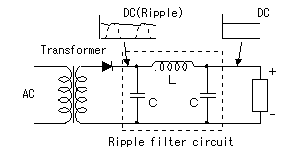Chip Sylverne
Final Approach
- Joined
- Jun 17, 2006
- Messages
- 5,892
- Display Name
Display name:
Quit with the negative waves, man.
So, I got tired of pumping 9v batteries into my anr headset. So I go on the interwebs, and find a nice, simple design for a 9v supply using a 7810 regulator, a .33mfd 50v cap on the 12v in, and a .1mfd cap on the out. Solder it all together, connect 'er up to a 12v battery, check the output and get a nice, steady 9.4 volts. Perfect, or so I think.
Solder a plug on it and plug it into my aux 12v panel plug. Works great for a good 30 minutes until I reduce rpm for and approach and I get the screaming feedback banshee from hell in the headset. Seems to happen on throttle reduction, not sure if that's coincidence or not. The regulator didn't seem hot to the touch, and besides this regulator chip is supposed to have an automatic thermal shutdown.
I'm already a whole $4 into his thing, and was wondering if any of you IEEE guys have an answer as to why this is happening and a solution.
(other than spending $40 for one that has already been engineered )
)
Solder a plug on it and plug it into my aux 12v panel plug. Works great for a good 30 minutes until I reduce rpm for and approach and I get the screaming feedback banshee from hell in the headset. Seems to happen on throttle reduction, not sure if that's coincidence or not. The regulator didn't seem hot to the touch, and besides this regulator chip is supposed to have an automatic thermal shutdown.
I'm already a whole $4 into his thing, and was wondering if any of you IEEE guys have an answer as to why this is happening and a solution.
(other than spending $40 for one that has already been engineered

